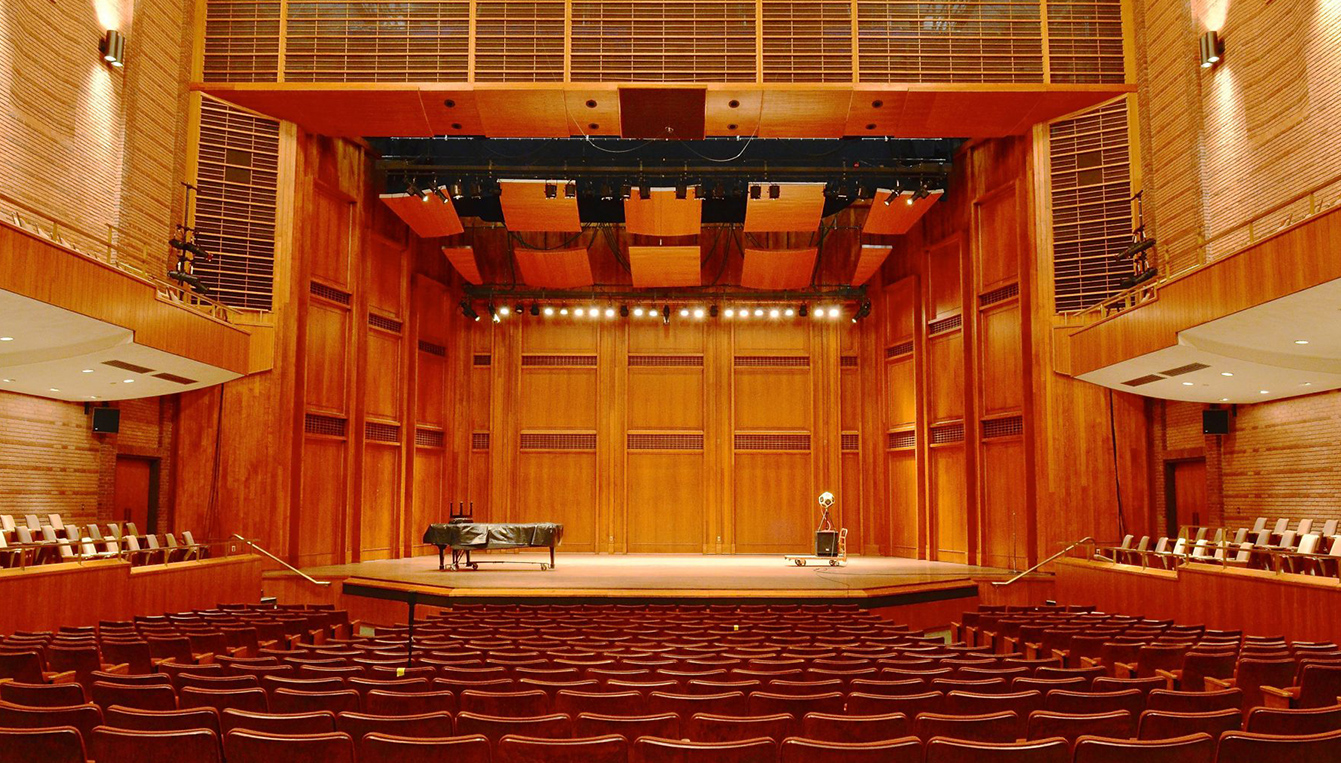 News
News
30 Acentech projects will be toured during AIA25 Conference!
Acentech worked on an astounding 30 projects that are being toured at the AIA25 Conference on Architecture in Boston next month! We had a great time…

As a musician since age 9, fledging theatre technician at 11, I became aware at an early age of the many things that can distract from performing artists’ work. By college age I had become a passionate advocate for eliminating background noise in spaces where performances happened.
While in graduate school, I was fortunate to stage manage a concert by the great classical guitarist Andrés Segovia, and I was impressed with his willingness to wait as long as necessary for his audience to get totally quiet. We had also turned off all noise-making equipment, even the very quiet large ventilation fan in Schwab Auditorium on the Penn State campus.
My theatre work pressed me to learn more about quiet in performances when a theatre at Penn State was created in a former cattle judging pavilion and a very noisy air handing system (no air conditioning) was installed. As the lighting designer for the School of Theatre’s summer program, and during an unusually hot summer when we were presenting Death of a Salesman, the producer insisted on running the noisy system during the performance rather than only during preshow, intermission and after the show. I took the step of turning off the noisy machines at a particular dramatic moment in the play: the death of the main character, Willy Loman. That allowed the requiem scene to take place in amazing and contrasting silence, the first time during that evening. What if entire performances could happen in such utter silence? That became my charge!
As my consulting practice continued, working on several of the world’s recent major concert and theatre facilities, I became more and more aware of the degree to which low noise affected judgment of overall acoustic quality. Achieving noise at or below threshold of hearing may represent 60% or more of what experienced listeners think of when they say, “good acoustics.” In fact, low noise allows one to hear more of the components of sound, such as the sound reflections from the many surfaces of the room, that make for greater clarity and a richer listening experience.
Working with people wishing to create performance spaces which support musicians, actors, dancers and their audiences at the highest quality level, I learned that, if conditions are right for the owner, architect, engineer(s), acoustics and theatre consultant’s collaboration, low noise can be achieved at relatively low cost—a very small percentage of a project’s total budget. Mostly what is needed is dedication and close attention by the project team to achieving this exemplary low noise. The specialized consultants must begin at the very beginning of the project, as the performance venue is sited, as noise-critical and noise-creating spaces are located on the parti, as acoustic and construction joints are drawn, as mechanical equipment is positioned relative to the performance space, and as space is allocated to ductwork and other mechanical system features.
Then, after this early planning is completed, the project team collaborates together to choose and locate equipment, properly isolate that equipment, design duct runs, design the ducts themselves and their terminations. Over time I learned that low noise is far more the result of appropriate design team attention to the initial planning and detailed design of HVAC systems, than simple application of funds. Because of this, I believe that when a team does an effective design job, even low budget projects can provide audiences, students and professional artists with very low noise and good hearing conditions.